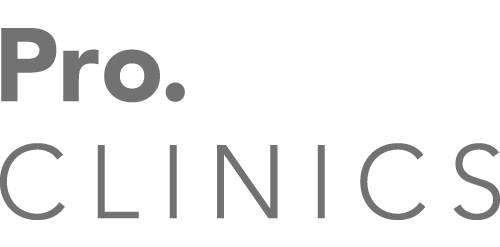Laser Age Spot & Sun Spot Treatment In Bristol
From £90 per session.
Why choose Pro Clinics for laser age spot & sunspot treatment?
If you are reading this page, then you are probably concerned by pigmentation issues such as age spots or sunspots.
You may well have found that there are several beauty parlours and private clinics in the area offering sunspot and age spot removal, so how do you know which clinic to choose? Pro. Clinics is an established and highly regarded specialist non-surgical treatment clinic, offering a full host of treatments ranging from tattoo removal to skin rejuvenation.

We are experts at removing blemishes from the skin, such as age spots and sun spots and successfully treat hundreds of happy satisfied customers each year.
We have various options that we can use for pigmentation issues such as cryotherapy (freezing the blemish using liquid nitrogen) as well as laser and IPL (Intense Pulsed Light)
We will decide on the most suitable course of action for your individual needs during our free in-depth initial consultation, where you will have the opportunity to ask any questions that you may have regarding the treatment.
Pro. Clinics have multiple 5-star reviews, on many different platforms, such as Google, Facebook, and Treatwell, so you can rest assured that you are in safe hands for whatever treatment you decide to have carried out.
Laser Age Spot & Sun Spot Treatment FAQs
Put simply, laser age spot and sun spot removal is the removal of a blemish, using a cosmetic laser.
At Pro. Clinics we can offer you laser treatment for age spots on your hands, your face, or your body.
Age spots are often brown and sometimes called liver spots. That said, they don’t actually have anything to do with the liver.
A more accurate name for these blemishes would be sun spots, as they are usually caused by sun exposure over the course of many years.
Having treated age spots and sun spots for many years, we have found that these brown spots usually fade well when treated with a Q Switched Nd YAG laser. However, it is very important to check that the blemish is benign before any laser treatment can start.
If your age spot is growing rapidly or has any lumps or black spots within it you should book an appointment with your GP first, just to check that it is safe to treat.
Most people have some form of pigmented spotting on their skin. Some are born with these spots and in others they develop over time through the aging process or sun exposure. While most brown spots are harmless, some may be a sign of skin cancer, so it is very important to keep a close eye on your skin and book an appointment with your GP if you have any concerns.
Below is a brief overview of the differences between these blemishes.
FRECKLES
Freckles are very small flat, circular spots, that are usually brown in color. They often appear in groups on areas of the skin that are regularly exposed to the sun, such as the face, arms, chest and legs. Freckles sometimes become darker after prolonged sun exposure, but often lighten up in the winter.
AGE SPOTS / SUN SPOTS
Age spots are also sometimes referred to as sun spots or solar lentigines. They are flat brown blemishes that appear when the skin is exposed excessively to ultraviolet light, either from the sun or from tanning beds. These blemishes often appear on areas of the body that are most exposed to the sun, such as the face, hands, neck, arms and legs.
MOLES
A mole is a growth that appears on the skin, that usually appears flesh-coloured, brown, or black. Moles tend to appear anywhere on the skin, sometimes alone, or occasionally in groups. Moles are often benign (non-cancerous) but there is always a chance that they are malignant (cancerous). For this reason, it is critical to monitor any moles that you may have. If you notice any significant changes in your mole you should book an appointment with your GP.
This is a very important question and one which we will try our best to answer for you. An age spot is a blemish on the skin. Whilst unsightly, they are ultimately harmless.
To make matters more confusing, Melanoma can also cause brown spots on the skin, although they are usually darker in color. This is the most dangerous type of skin cancer, so if you find a brown spot on your body that you are concerned about, it is essential to book an appointment with your GP right away.
It is not always easy to tell the difference between age spots and melanoma, but generally speaking age spots have smooth borders and are often uniform in color. They are also usually painless.
Melanoma are far more serious and can change colour over time. The blemishes are usually black or dark brown and have jagged edges. They are also sometimes painful or itchy. It is very important to see a doctor as soon as possible if a spot has the following early signs of melanoma: starts to grow very quickly, is very dark in colour, or has an irregular border. You should also be wary if the blemish has an odd combination of colors, that include red, if it bleeds, is itchy, or painful.
It is worth remembering that melanoma are curable if found in the early stages. However, once it spreads, it can compromise internal organs and lead to serious and even fatal outcomes.
Many people are desperate to hide the signs of aging, and sun spots or age spots are a real giveaway. These small dark patches technically known as hyperpigmentation are generally caused by over production of melanin, the brown pigment within the skin that is caused by long term exposure to UV light.
There are various treatments available ranging from creams, lotions and concealers.
Sadly, creams and lotions are often ineffective at removing these troublesome blemishes, and concealers only offer a temporary solution. Laser is a quick and effective option, and at Pro Clinics we regularly help our clients to achieve blemish free skin.
Laser and Intense Pulsed Light (IPL) work by destroying the melanin producing cells (melanocytes), but without damaging the area around the blemish. Treatments with a laser or Intense Pulsed Light (IPL) are very safe, as the area surrounding the sun spot, or age spot, is not affected. As with all clinical procedures, it is important to keep the treated area clean and sterile afterwards to minimize the risk of infection.
Age spots and sun spots are generally nothing to worry about, although for many people, they are an annoyance. Removing them using a laser is a quick and easy process and one that many people are keen to embrace. The treatment is cosmetic and although there is no medical advantage to removing age spots or sun spots, aesthetically speaking most people would prefer to have blemish free skin.
We charge from £80 per session for Laser Age Spot / Sun Spot Removal. This price will cover up to 10 blemishes. If you require more than 10 blemishes to be treated, additional costs will apply.
We can safely and effectively remove age spots / sun spots from almost any area of the body.
The laser light is very bright and can seriously damage eyes, so everyone in the room will have to wear protective goggles. The laser fires in rapid bursts; these feel a bit like the spatter of hot fat from a frying pan, or the flick of an elastic band. The discomfort varies with the sensitivity of the area being treated. The treated area will sting for a while afterwards and a dark purple scab will form and last for about two weeks. Some pinkness of the treated area will persist for several weeks. Another treatment may be necessary after two to three months.
Generally speaking, 1 session using our powerful Q Switched Nd Yag laser is enough to permanently remove unwanted age spots / sun spots, although on some occasions, a follow up session may be required around a month later.
Once the treatment has been completed, the effects are generally considered to be permanent. That said, it is not to say that new age spots / sun spots may not appear, as they are a natural symptom of aging and a reaction to UV light.
Laser sun spot / age spot removal is a very safe and effective way of removing these unwanted blemishes. Serious problems are rare. Scarring is a potential problem, but unlikely and if it does occur, it is usually in the form of some change in texture of the skin. There can also be some loss of natural tanning ability in the treated area, but this often improves with time. On darker skin tones or tanned skin, it is difficult to get an even tone, so it is unlikely to match your natural skin colour.
You should not have many problems with the treated area, as it generally settles rapidly if left alone. It should not need a dressing as long as you can resist picking and scratching. The longer the scab stays undisturbed, the better the outcome.
It is important not to get the treated area soggy, so no long baths or swimming, although gentle washing and showering is fine. Hand cream and moisturiser can be used, but very gently so as not to disturb the scabs.
Once the scabs have come off naturally, you can resume all usual activities. A suntan gets in the way of the laser light so avoid the sun, or use a strong sunblock before, during and after the treatment in order to keep the area as pale as possible.

